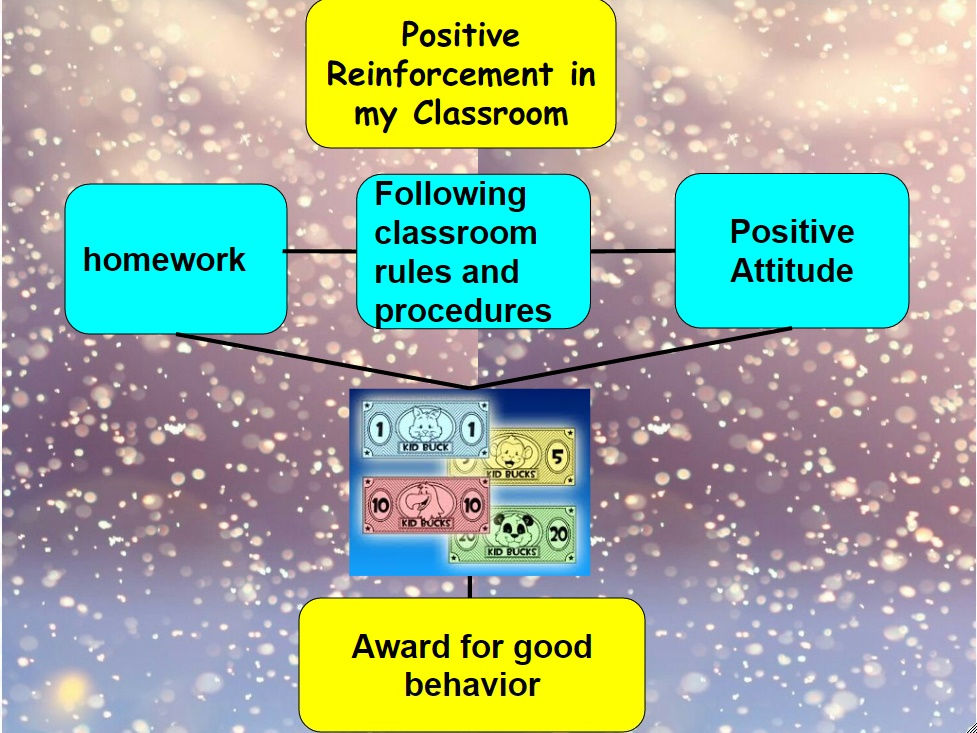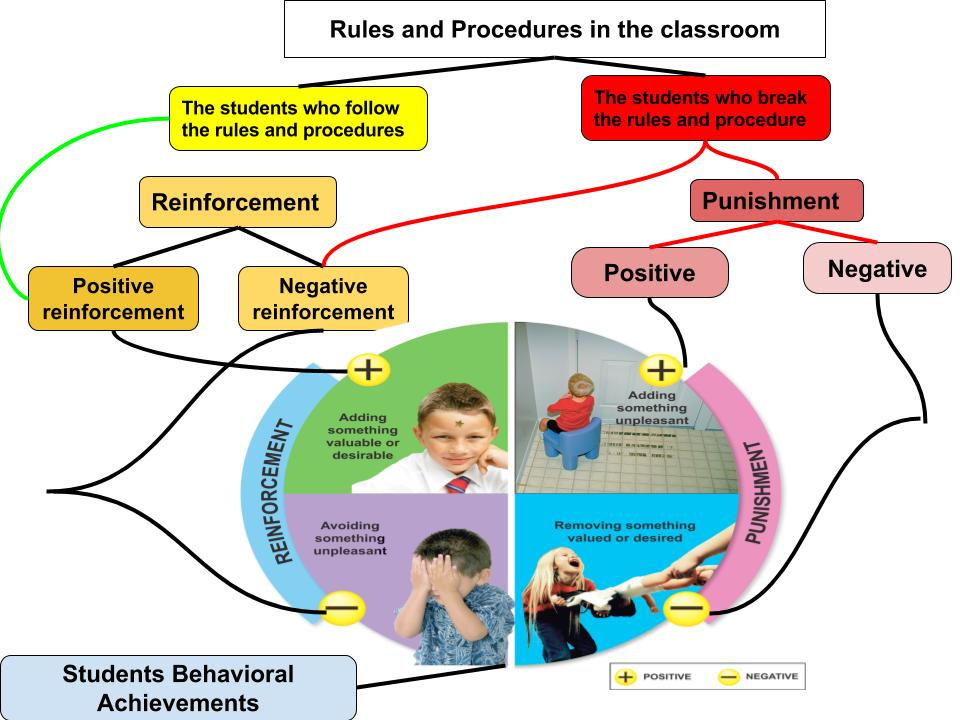Positive Reinforcement
- Jyldyz Byler

- Nov 24, 2016
- 5 min read

To build positive changes, learners need a clear idea of what positive behavior is and to be positively reinforced when they indicate that behavior. Positive reinforcement is any development that follows a behavior and increases the chance that the behavior will be repeated. Positive reinforcement motivates learners to do what they are capable of doing.
Students are more engaged in learning and retain knowledge better when they see that it is relevant and vital to their own success and happiness. By discovering students' talents, learning styles, and interests, teachers can adjust teaching methods and strategies. By giving students a say in how the classroom operates, teachers increase students' sense of ownership in the education process.
The Importance of Positive Reinforcement
Students are more engaged in learning and keep possession of knowledge better when they see
that it is relevant and essential to their own success and happiness. By finding students' talents, interests, and learning styles , teachers can regulate teaching methods and strategies. To give the students a voice in how the classroom operates, educators increase students' sense of ownership in the education process.
Teachers can strengthen intrinsic motivation by recognizing and positively reinforcing positive actions when they see them. Recognition activities and items—such as tokens, stickers, and certificates—can be effective. But when teachers or other staff use this strategy, it's important that they recognize the positive behavior, ask how it made the student feel, and tell the student the extrinsic reward is a reminder of that good feeling. When students make the connection between their performance and feeling good about themselves, intrinsic motivation is enhanced and positive behaviors continue.
Positive reinforcement in my classroom
When students are following the rules and procedures of the classroom, it will be my responsibility as a teacher to recognize those instances and sing their praises. My own reaction to students who are following the rules will be a crucial component of my plan to dish out positive reinforcement. This will require me to carry some withitness so I can observe and recognize each student when they are doing a good job and meeting/exceeding the expectations.
I apply positive reinforcement in my classroom for behavior management by using varies strategies:
I would like describe two of these strategies that I find effective for classroom behavior and that I could suggest for other teachers.
Every morning before the day start the students get 5$ kid bucks. Kid bucks is a paper money that I made to use in my classroom. Also, I made little shop where the students can spend their kid bucks. In the shop the students can buy toys and different kind of school supplies as colorful sharpener, modeling clay set, body art markers etc. So, the students get paid for:
Following rules and procedures in the classroom
-every student has classroom job and it is important they do their responsibility in the classroom without being told by teacher
-One of the rules that students need to follow is staying on task. If they off the task it’s destruct not only the teacher but also other students.
-The students learn go to bathroom during the recess time other way they have to pay for bathroom trip.
Doing homework
-The students have to do their homework and in the morning when they came to the classroom put it in a teachers table.
-If they had a reason do not do their homework they need to show a note from their parents.
Showing positive attitude
-The students get paid for showing positive attitude as helping each other during the class time.
-Do not running and shouting in the hall way.
-Being kind and polite.
During the week the students will collect kid bucks for thing that listed above then they will go to the shop to buy some toys or other things they were planning to get it. This system is very effective for classroom behavior. Good things is about this strategy is the students have a choice how to manage their behavior. For example, some students take seriously collecting their kid bucks so they decide do not go to bathroom during the class time unless if they really have to. They very careful with the way how they interact with other students. So, in the end of the week they have more money than the other students which make them really happy. A reward end of the week, keep the students motivated and excited so they put a lots of effort to show positive behavior in the classroom.

The Rule Breakers
The students who break the rules pay fine in my classroom. So, in the morning as soon as they came, they need to put their homework on teacher’s desk, then they need to do their classroom job. For every their negative actions the students pay 1$ kid bucks. Also, end of the day, the students need to write in their homework notebook how many $ fine they got and what for, so parents can see it. I really like this behavior strategy because the students understand their mistake and they don’t take it as a punishment when they get a fine, they more accept that as a chance to show good behavior next time.
The students who constantly keep braking rules I gave three warnings before send them to principal’s office. But this kind of consequence I gave to the students really rare and only when they show extremely bad behavior. This strategy might be not the best one but sometimes I have situations when I don’t have any other options than send the students to the principal.
Negative reinforcement in my classroom
I believe by punishing the students the teachers can’t get any good result for behavior or academic achievement. So, instead using words like “don’t do that”, or “This is wrong” I just compare their good action with bad action and let them choose. Also, I monitor my students’ behavior during the day and if I see that some students demonstrating positive behavior I will tell loudly so, everyone can hear that I appreciated their good behavior and they will get award for that. If the students day dreaming and off task, I let them know that I am keeping them during the recess time. They don’t like stay over time in the classroom, so they always try to get done before recess. I really like this strategy because this strategy encourage the students to have better behavior. Also, I think if I expect from my students good behavior I should model first. That’s why I always thanks them if I see them showing good attitude. I noticed if the teacher use punishment system it is quite stressful for the students. I don’t like punishing students. I think by punishing students the teacher might destroy their relationship with students.

Many positive educational outcomes can be framed in terms of desirable behavior. Teachers, administrators, and parents all consider behaviors such as attending school regularly and promptly, being actively engaged during classroom lessons, showing respect for others, making good grades, and graduating from school as desirable ways to behave.
The fundamental task of classroom management is to create a caring, supportive, inclusive, and engaging community in which students frequently engage in desirable, constructive, and prosocial behavior.When practiced effectively, classroom management is a proactive strategy that creates a classroom environment in which desirable behavior is expected, supported, and reinforced. From this point of view, reinforcement plays only one part in the teacher's larger effect to manage the classrooms.
References
URLhttp://www.education.com/reference/article/reinforcement/
Article TitleEducation.com
Website TitleReinforcement
URLhttp://www.learnalberta.ca/content/inspb1/html/6_positivereinforcement.html
Article TitleKey Element 6: Positive reinforcement – Supporting Positive Behaviour
Website TitleKey Element 6: Positive reinforcement – Supporting Positive Behaviour
URLhttp://www.youtube.com/watch?v=wLoMs-OzimU
Article TitleYouTube
Website TitlePsychology: Reinforcement and Punishment




Comments